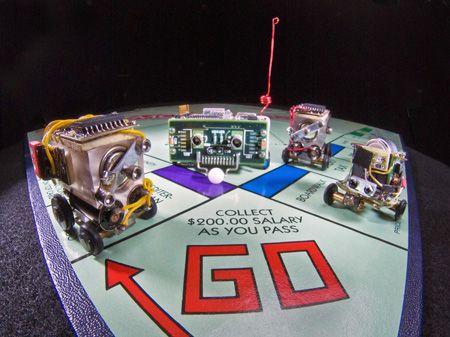Smithsonian Snaps Up Nine Historic Robots from Sandia National Labs
The Smithsonian’s permanent collection now includes tiny robots, robots that jump, and an autonomous robot from 1985, all courtesy Sandia Labs
While thinking about robotics as a still-emerging field, as we do, we don’t often stop to consider how even the relatively recent past has a significant historical relevance. Fortunately, this is the job of the Smithsonian Institution, and they seem to be very proactive about it, having just acquired nine robots from Sandia National Labs for their permanent collection.
The robots in the above picture include MARV (Miniature Autonomous Robotic Vehicle), a design from 1996 that used mostly commercial parts and measured only about one inch square [about 6.5 square centimeters]. MARV was one of the first robots to really tackle miniaturization head on, and it inspired all kinds of tiny little descendants, including Sandia’s own dime-sized tank.
Also heading to the Smithsonian are SIR, a robot that could navigate through a building autonomously in 1985 (on the left), Dixie, a reconnaissance robot from 1987 (at the back), and some of those crazy hopping robots.
It’s fun to think about what robots that we have around us right now are likely to find a place in the Smithsonian’s collection within a decade or two... After five seconds of thought (which means I’m missing all kinds of slightly less obviously but equally worthy choices), I’d have to put my money on a Roomba, PR2, Keepon, a Predator, and Wall-E. What do you think?
Via [ Sandia ]
Evan Ackerman is a senior editor at IEEE Spectrum. Since 2007, he has written over 6,000 articles on robotics and technology. He has a degree in Martian geology and is excellent at playing bagpipes.
